We may receive a commission when you use our affiliate links. However, this does not impact our recommendations.
While walking through the ridiculously tidy racks at Northwest Timber in Jefferson, Ore., I realized at that moment something that hadn’t fully occurred to me during the last 20 years.
I am buying, transporting and storing a lot of garbage.
Not “garbage” in the sense that the wood is of poor quality. But garbage in the sense that a good deal of rough stock goes into the dust collector, scrap bin or burn pile. It’s waste; not stuff that I can use to build furniture.
Northwest Timber, which has both a huge online store and bricks-and-mortar warehouse, takes a radically different approach. They season almost all of the wood they sell and are fastidious about moisture content, tiny defects and insect infestation. They joint and plane every piece to remove anything – anything – that is not perfect or beautiful.
Then they photograph every piece from a variety of angles in high resolution so you can do everything you need to decide if that board is right for you – except perhaps smell it.
They match color, grain, figure and create bookmatched sets.
In other words, when you walk through the racks, you have never seen so much perfect lumber in your life.
It’s expensive. So if you revel in chasing wood that is a buck a board foot, Northwest is not for you. But if you need awesome wood for a special project or picky client, or if you make musical instruments, you will be thrilled.
If I had to explain it to a non-woodworker, it’s like this: Going to a traditional lumberyard is like digging for gold in a mine. Going to Northwest is like shopping at a jewelry store.
I spent the morning at Northwest with Lewis and Sara Judy on the advice of my friend Tom Pier because I needed 4/4 Port Orford cedar for an upcoming project for Popular Woodworking Magazine. Lewis took me on a tour of the place to show me the racks, machines and drying area for their stock.
Lewis started out as a furniture maker. After many years of making, Lewis reopened his business (in the same location) as Northwest Timber. You can read the entire history of the place here.
As a result, Lewis looks at wood a little differently than some yards I’ve visited. He and his employees have a great eye for grain, color and figure. They process only salvaged wood, including claro walnut, spalted Western maple and Oregon myrtlewood.
After walking through the racks, Lewis took me to their air-drying stacks where they gently season wood for years before a final trip to the kiln. One of the more unusual sights was in one of the air-drying chambers where they had set up two enormous fans that were blowing over what looked like an orchestra audience of short, upright sticks.
This gentle process speeds the surface drying of the wood, Lewis says. But also important is the surface of the wet wood. He prefers a rough chainsawn surface on the wood surface, which he says dries faster than a band-sawn surface.
In the end, I got exactly what I wanted: four 7’-long sticks of perfect Port Orford cedar. No waste, no wane. And they boxed it up and shipped to my house via UPS at a very reasonable rate.
I’m sold. And though it might seem weird buying wood from across the continent instead of across town, I’ll get over it.
— Christopher Schwarz
Here are some supplies and tools we find essential in our everyday work around the shop. We may receive a commission from sales referred by our links; however, we have carefully selected these products for their usefulness and quality.



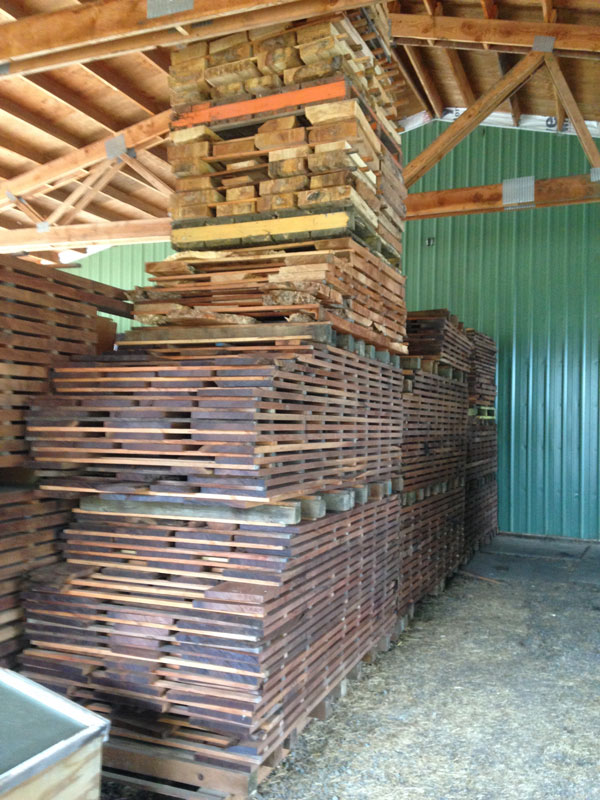
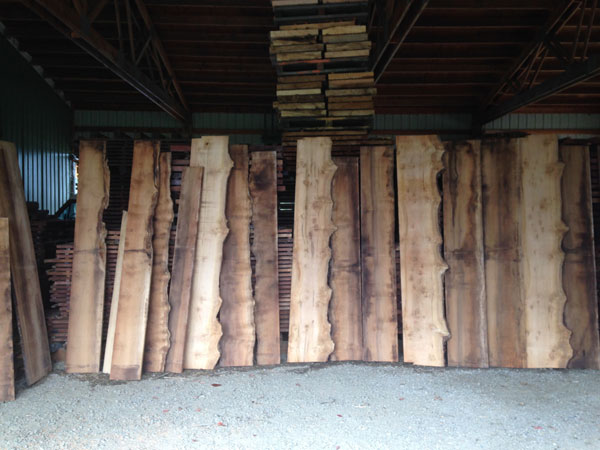
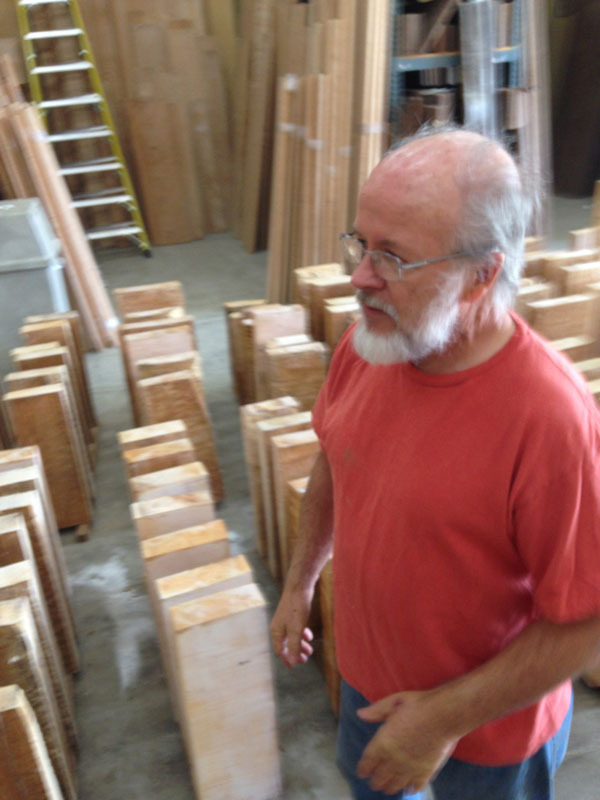

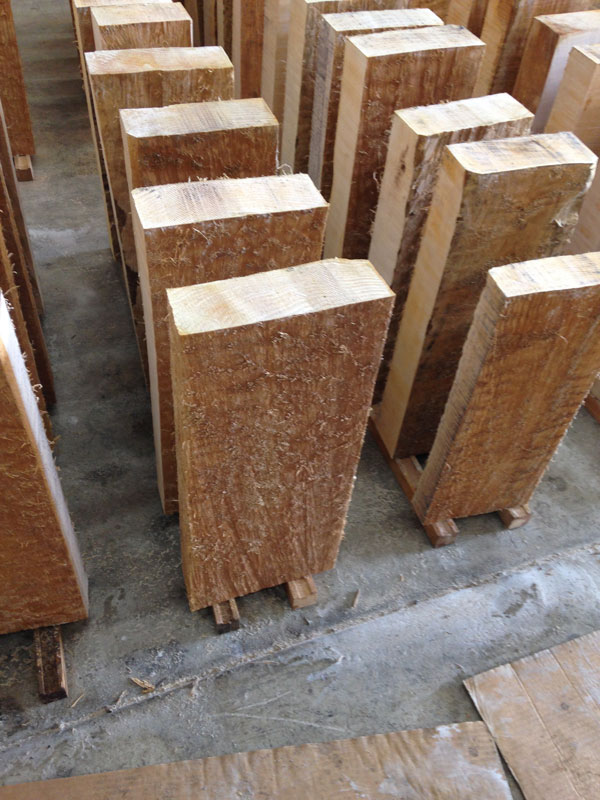





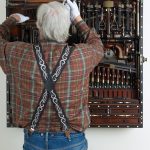
I’ve been buying Claro Walnut from Lewis over the last five years. His commitment to the quality of his product is outstanding and only topped by his service; before and after the sale.
Thanks to Northwest Timber.
Doh! You just gave away my super secrete lumber stash! 😉 But seriously, I looovve their stuff and look for any reason to sneak down and buy a stick. I’m about to make two coffee tables out of some beautiful wide curly cherry I bought from them. So they have cherry too!
I use their chat feature (usually with Sara) to help me zero in on what I want. I’ve never been disappointed.
I believe the reason the chain-sawed wood dries faster than the bandsawn material is the moisture wicks to the “danglies” on the surface of the wood and thus you have more surface area for drying. This is why Indians had fringe on their leather garments.
I’m hoping that you had time to visit Silver Creek Falls State Park if you were that close. If you didn’t, you need to go back to spend a day hiking the falls. You won’t regret spending the time.